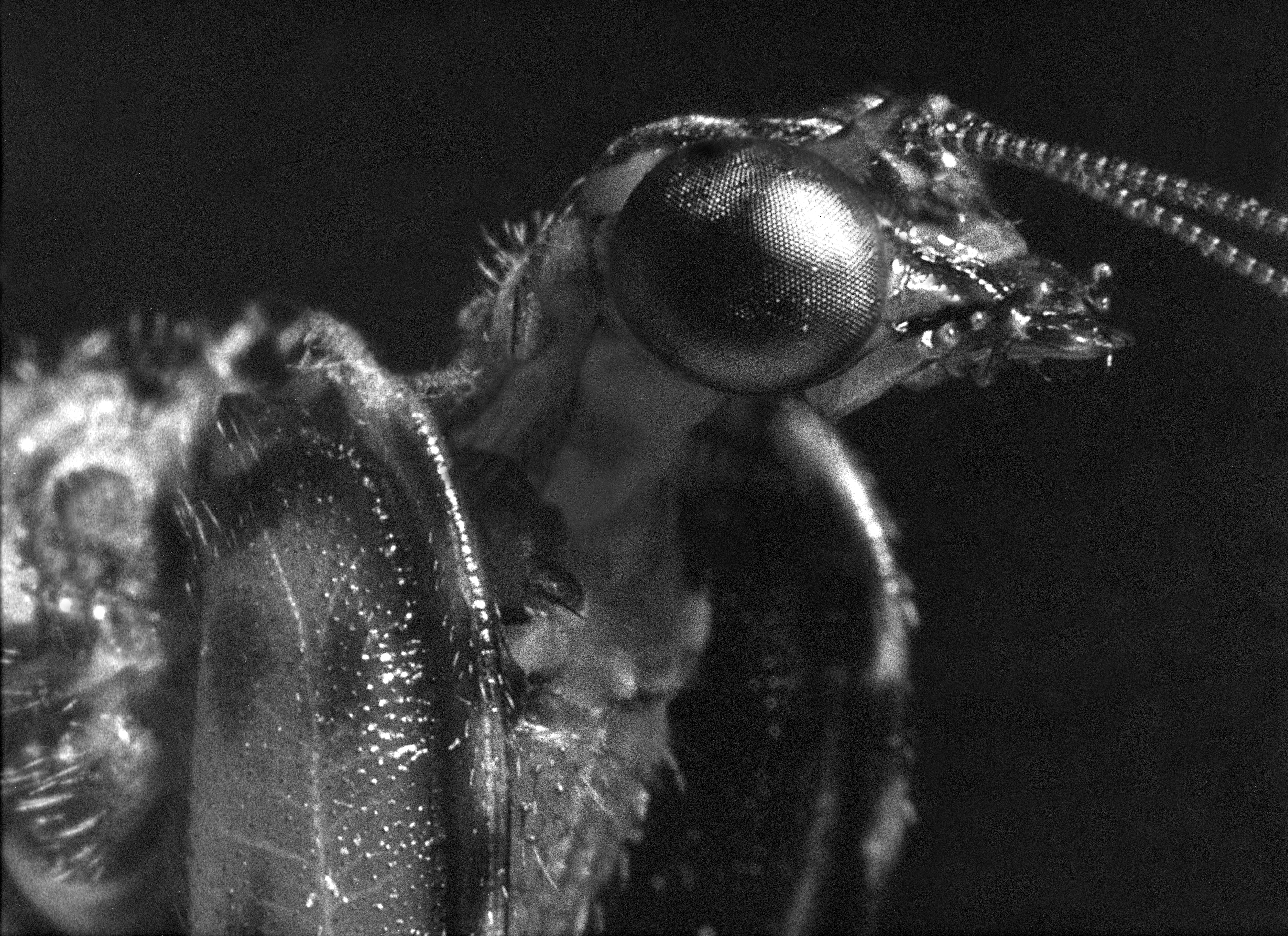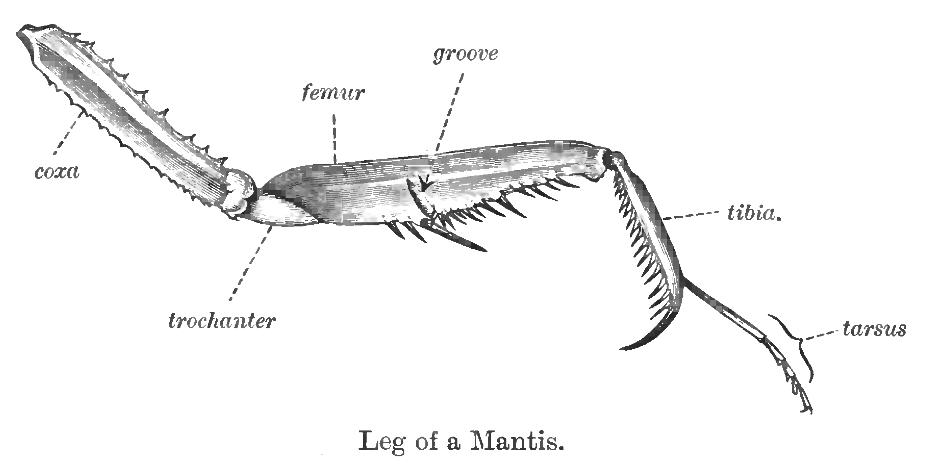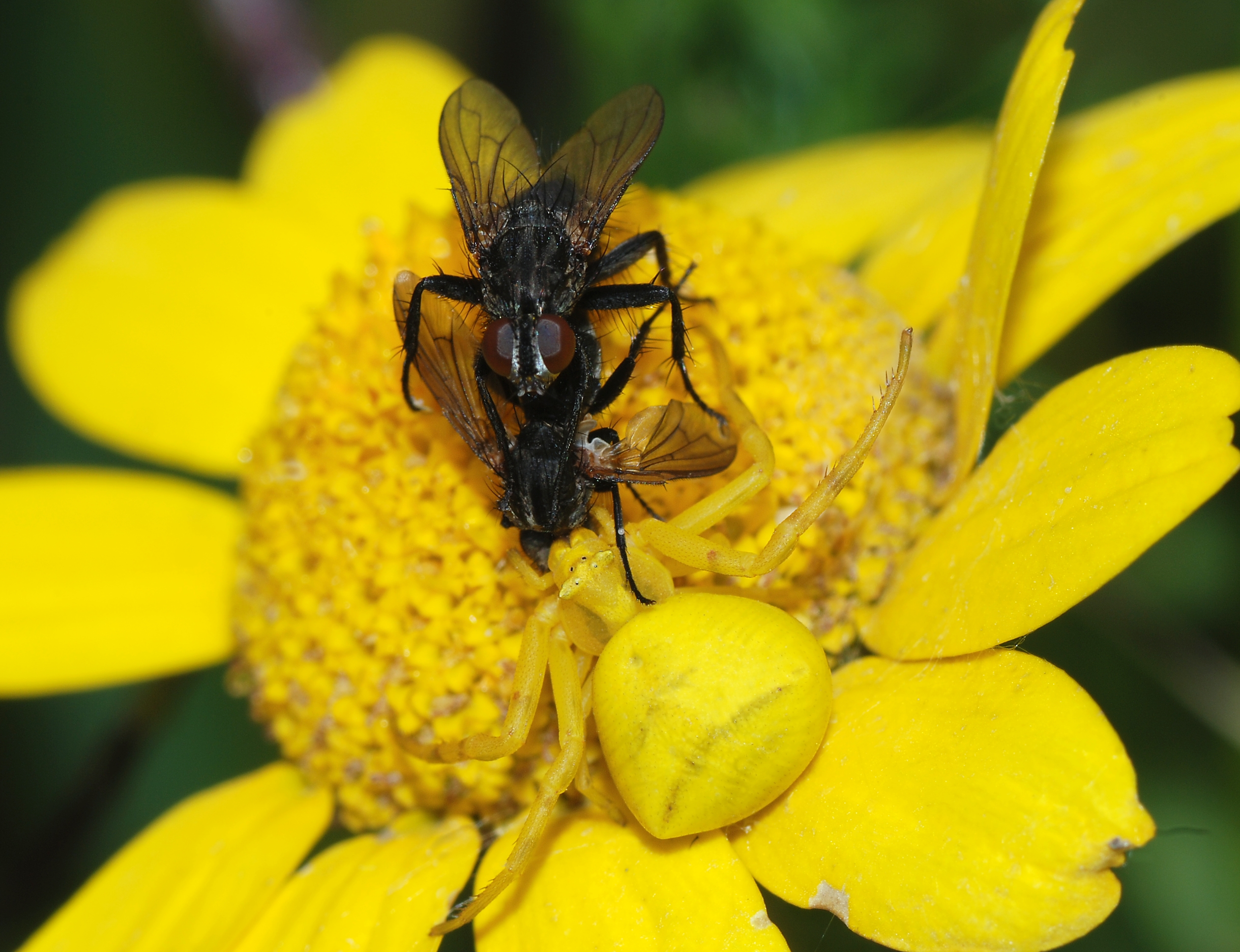|
Mantis
Mantises are an order (Mantodea) of insects that contains over 2,400 species in about 460 genera in 33 families. The largest family is the Mantidae ("mantids"). Mantises are distributed worldwide in temperate and tropical habitats. They have triangular heads with bulging eyes supported on flexible necks. Their elongated bodies may or may not have wings, but all mantodeans have forelegs that are greatly enlarged and adapted for catching and gripping prey; their upright posture, while remaining stationary with forearms folded, resembling a praying posture, has led to the common name praying mantis. The closest relatives of mantises are termites and cockroaches (Blattodea), which are all within the superorder Dictyoptera. Mantises are sometimes confused with stick insects (Phasmatodea), other elongated insects such as grasshoppers (Orthoptera), or other more distantly related insects with raptorial forelegs such as mantisflies ( Mantispidae). Mant ... [...More Info...] [...Related Items...] OR: [Wikipedia] [Google] [Baidu] [Amazon] |
Mantis Religiosa
The European mantis (''Mantis religiosa'') is a large Hemimetabolism, hemimetabolic insect in the Mantidae family, which is the largest family of the order Mantodea (mantises). Their common name praying mantis is derived from the distinctive posture of the first pair of legs that can be observed the mantis is in repose, resembling a praying position. Both males and females have elongated bodies with two pairs of wings. The most striking features that all Mantodea share are a very mobile, triangular head with large compound eyes and their first pair of legs (the 'raptorial legs'), which is highly modified for the efficient capture and restraint of fast-moving or flying prey. In Germany, ''M. religiosa'' is listed as ''Gefährdet'' [endangered] on the German Red List on the basis of an assessment from 1998. It is not supposed to be caught or held as a pet. At a global level, it is assessed by the IUCN as least concern. Anatomy Though females of ''M. religiosa'' are usually large ... [...More Info...] [...Related Items...] OR: [Wikipedia] [Google] [Baidu] [Amazon] |
Mantispidae
Mantispidae (), commonly known as mantidflies, mantispids, mantid lacewings, mantisflies or mantis-flies, is a family of small to moderate-sized insects in the order Neuroptera. There are many genera with around 400 species worldwide, especially in the tropics and subtropics. Only five species of '' Mantispa'' occur in Europe. As their names suggest, members of the group possess raptorial forelimbs similar to those of the praying mantis, a case of convergent evolution. Description and ecology About long and with a wingspan of , some mantidflies such as '' Climaciella brunnea'', '' Euclimacia nodosa'' are wasp mimics, but most are brownish with green, yellow and sometimes red hues. The vernacular and scientific names are derived from their mantis-like appearance, as their spiny "raptorial" front legs are modified to catch small insect prey and are very similar to the front legs of mantids (the only difference is that the pincers lack footpads and are not used for walking at al ... [...More Info...] [...Related Items...] OR: [Wikipedia] [Google] [Baidu] [Amazon] |
List Of Mantis Genera And Species
The following list of mantis genera and species is based on the "Mantodea Species File", which is the primary reference for the taxonomy shown here. The insect Order (biology), order Mantodea consists of over 2,400 species of mantises in about 460 genus, genera. 75 of these genera are in the Family (biology), family Mantidae (the mantids), which formerly was the sole family recognized within the order. In some cases, common names in the English language are loosely applied to several different members of a particular genus, or even for species in various genera. For example, "giant Asian mantis" is used for various members of ''Hierodula'', "dead leaf mantis" may refer not only to various species of ''Deroplatys'', but to all brown mantises that use leaf mimicry for camouflage. "flower mantis" refers to numerous mantises, especially those belonging to or similar to those of genus ''Creobroter'', and so on. ---For citation of common nomenclature and additional references, see indiv ... [...More Info...] [...Related Items...] OR: [Wikipedia] [Google] [Baidu] [Amazon] |
Mantidae
Mantidae is one of the largest family (biology), families in the Order (biology), order of Mantodea, praying mantises, based on the type species ''Mantis religiosa''; most genera are tropical or subtropical. Historically, this was the only family in the Order (biology), order, and many references still use the term "mantid" to refer to any mantis. Technically, however, "mantid" refers only to members of the family Mantidae, and not the numerous remaining Family (biology), families of mantises. Some of the most recent classifications have promoted a number of the mantid subfamily, subfamilies to the rank of Family (biology), family, e.g. Iridopterygidae, Sibyllidae, Tarachodidae, Thespidae, and Toxoderidae, while other classifications have reduced the number of subfamily, subfamilies without elevating them to higher rank. Subfamilies and genera Following the major revision of the Mantodea in 2019, the ''Mantodea Species File'' includes ten subfamilies: Choeradodinae The Amer ... [...More Info...] [...Related Items...] OR: [Wikipedia] [Google] [Baidu] [Amazon] |
Ambush Predator
Ambush predators or sit-and-wait predators are carnivorous animals that capture their prey via stealth, luring or by (typically instinctive) strategies utilizing an element of surprise. Unlike pursuit predators, who chase to capture prey using sheer speed or endurance, ambush predators avoid fatigue by staying in concealment, waiting patiently for the prey to get near, before launching a sudden overwhelming attack that quickly incapacitates and captures the prey. The ambush is often opportunistic, and may be set by hiding in a burrow, by camouflage, by aggressive mimicry, or by the use of a trap (e.g. a web). The predator then uses a combination of senses to detect and assess the prey, and to time the strike. Nocturnal ambush predators such as cats and snakes have vertical slit pupils helping them to judge the distance to prey in dim light. Different ambush predators use a variety of means to capture their prey, from the long sticky tongues of chameleons to the expand ... [...More Info...] [...Related Items...] OR: [Wikipedia] [Google] [Baidu] [Amazon] |
Raptorial
In biology (specifically the anatomy of arthropods), the term ''raptorial'' implies much the same as ''predatory'' but most often refers to modifications of an arthropod leg, arthropod's foreleg that make it function for the grasping of prey while it is consumed, where the gripping surfaces are formed from the opposing faces of two successive leg Segmentation (biology), segments (''see illustration''). This is distinctly different from the grasping mechanism of a structure such as a scorpion's claw (a "Chela (organ), chela") in which one of the opposing surfaces is an articulated digit, and not a leg segment. While this is most widely known in Mantodea, mantises, similarly modified legs can be found in some crustaceans (e.g., mantis shrimp), and various insect families, such as Mantispidae, Belostomatidae, Nepidae, and Naucoridae (all members of these groups have raptorial forelegs). There are numerous other lineages within various insect families that have raptorial forelegs, mo ... [...More Info...] [...Related Items...] OR: [Wikipedia] [Google] [Baidu] [Amazon] |
Termite
Termites are a group of detritivore, detritophagous Eusociality, eusocial cockroaches which consume a variety of Detritus, decaying plant material, generally in the form of wood, Plant litter, leaf litter, and Humus, soil humus. They are distinguished by their moniliform antennae and the soft-bodied, unpigmented worker caste for which they have been commonly termed "white ants"; however, they are not ants but highly Apomorphy and synapomorphy, derived cockroaches. About 2,997 extant species are currently described, 2,125 of which are members of the family Termitidae. Termites comprise the infraorder Isoptera, or alternatively the Taxonomic rank#All ranks, epifamily Termitoidae, within the order Blattodea (the cockroaches). Termites were once classified in a separate Order (biology), order from cockroaches, but recent phylogenetic studies indicate that they evolved from cockroaches, as they are deeply nested within the group, and the sister group to wood-eating cockroaches of t ... [...More Info...] [...Related Items...] OR: [Wikipedia] [Google] [Baidu] [Amazon] |
Dictyoptera
Dictyoptera (from Greek δίκτυον ''diktyon'' "net" and πτερόν ''pteron'' "wing") is an insect superorder that includes two extant orders of polyneopterous insects: the order Blattodea (termites and cockroaches together) and the order Mantodea (mantises). All modern Dictyoptera have short ovipositors and typically lay oothecae. The oldest fossils of Dictyoptera from the Late Carboniferous, referred to as " roachoids" have long ovipositors and did not lay oothecae. The oldest modern oothecae-laying dictyopterans date to the Late Triassic. __TOC__ Classification and phylogeny The use of the term Dictyoptera has changed over the years, and while largely out of use for much of the last century, it is becoming more widely used. It has usually been considered a superorder, with Isoptera, Blattodea and Mantodea being its three orders. In some classifications, however, Dictyoptera is shifted to order status and in others the order Isoptera has been subsumed under Blattodea ... [...More Info...] [...Related Items...] OR: [Wikipedia] [Google] [Baidu] [Amazon] |
Sexual Cannibalism
Sexual cannibalism is when an animal, usually the female, Cannibalism, cannibalizes its mate prior to, during, or after Copulation (zoology), copulation. This trait is observed in many arachnid orders, several insect and crustacean clades, Gastropoda, gastropods, and some snake species. Several hypotheses to explain this seemingly paradoxical behavior have been proposed, including the adaptive foraging hypothesis, aggressive spillover hypothesis and mistaken identity hypothesis. This behavior is believed to have evolved as a manifestation of sexual conflict, occurring when the reproductive interests of males and females differ. In many species that exhibit sexual cannibalism, the female consumes the male upon detection. Females of cannibalistic species are generally hostile and unwilling to mate; thus many males of these species have developed adaptive behaviors to counteract female aggression. Prevalence Sexual cannibalism occurs among insects, arachnids and Amphipoda, amphipods. ... [...More Info...] [...Related Items...] OR: [Wikipedia] [Google] [Baidu] [Amazon] |
Cockroach
Cockroaches (or roaches) are insects belonging to the Order (biology), order Blattodea (Blattaria). About 30 cockroach species out of 4,600 are associated with human habitats. Some species are well-known Pest (organism), pests. Modern cockroaches are an ancient group that first appeared during the Late Jurassic, with their ancestors, known as "Roachoid, roachoids", likely originating during the Carboniferous period around 320 million years ago. Those early ancestors, however, lacked the internal ovipositors of modern roaches. Cockroaches are somewhat generalized insects lacking special adaptations (such as the sucking Insect mouthparts, mouthparts of aphids and other Hemiptera, true bugs); they have chewing mouthparts and are probably among the most primitive of living Neopteran insects. They are common and hardy insects capable of tolerating a wide range of Köppen climate classification, climates, from Arctic cold to Tropics, tropical heat. Tropical cockroaches are often muc ... [...More Info...] [...Related Items...] OR: [Wikipedia] [Google] [Baidu] [Amazon] |










